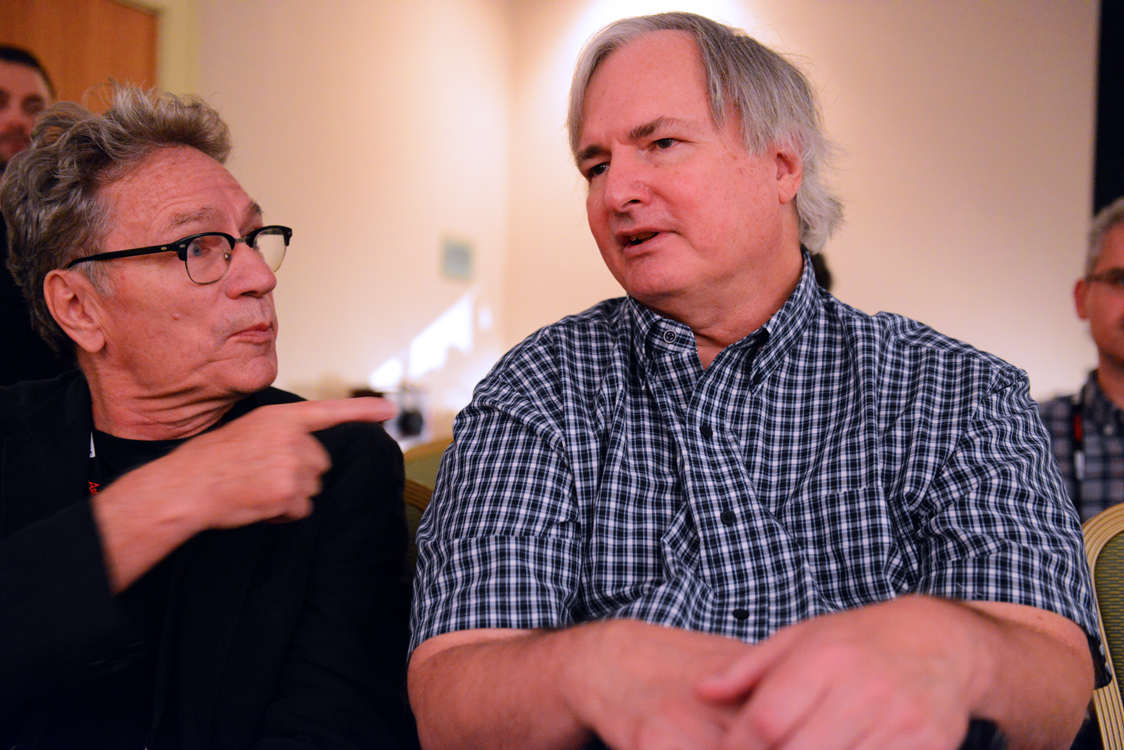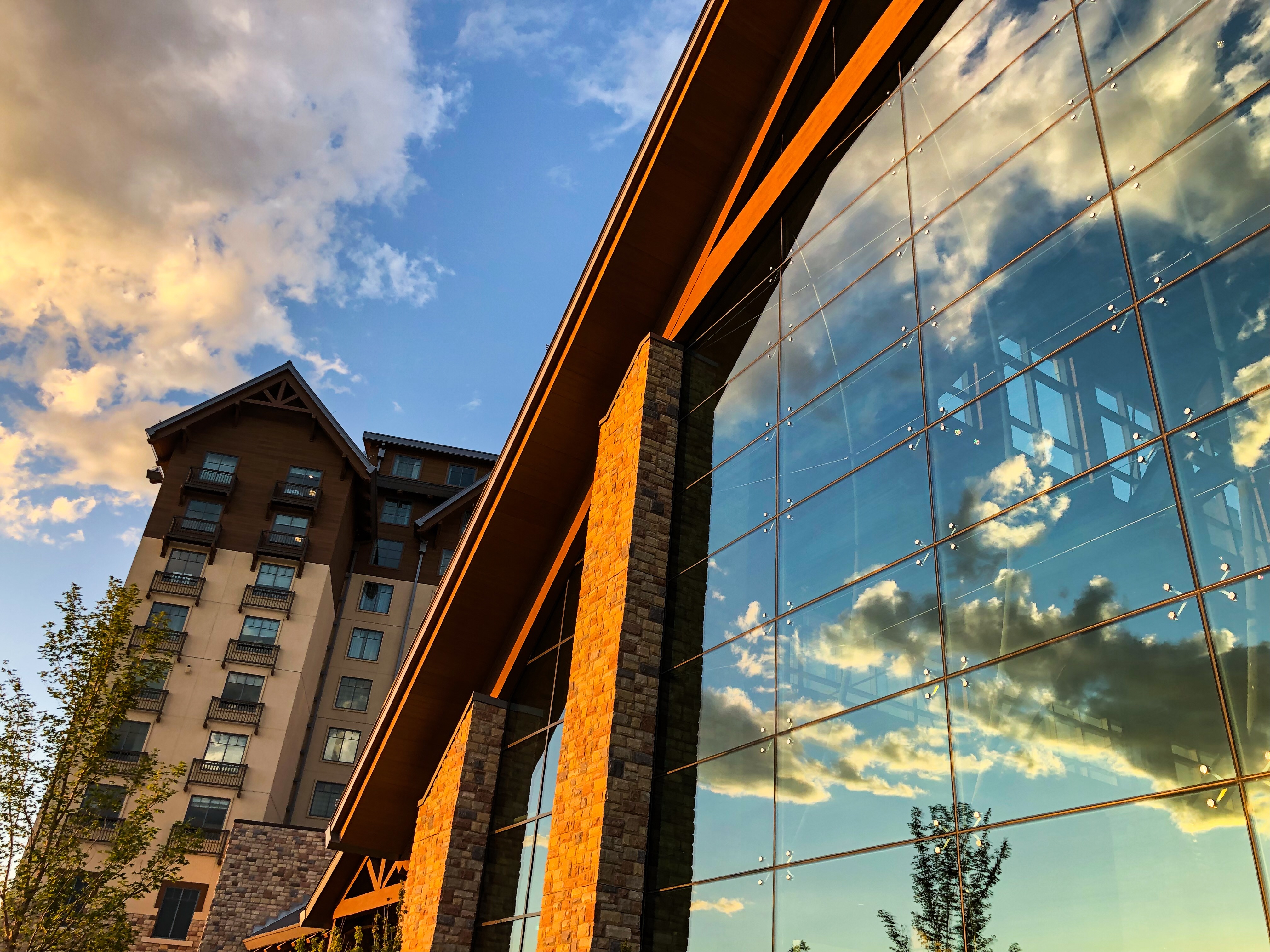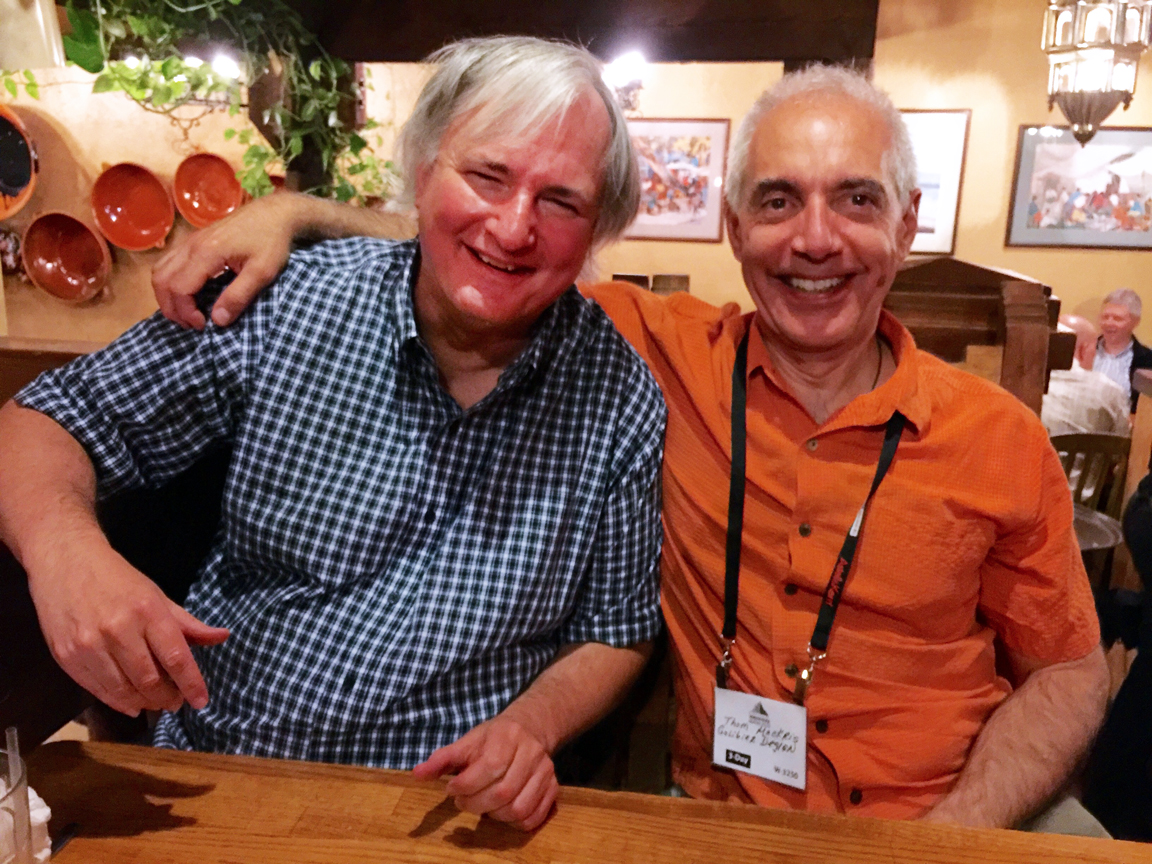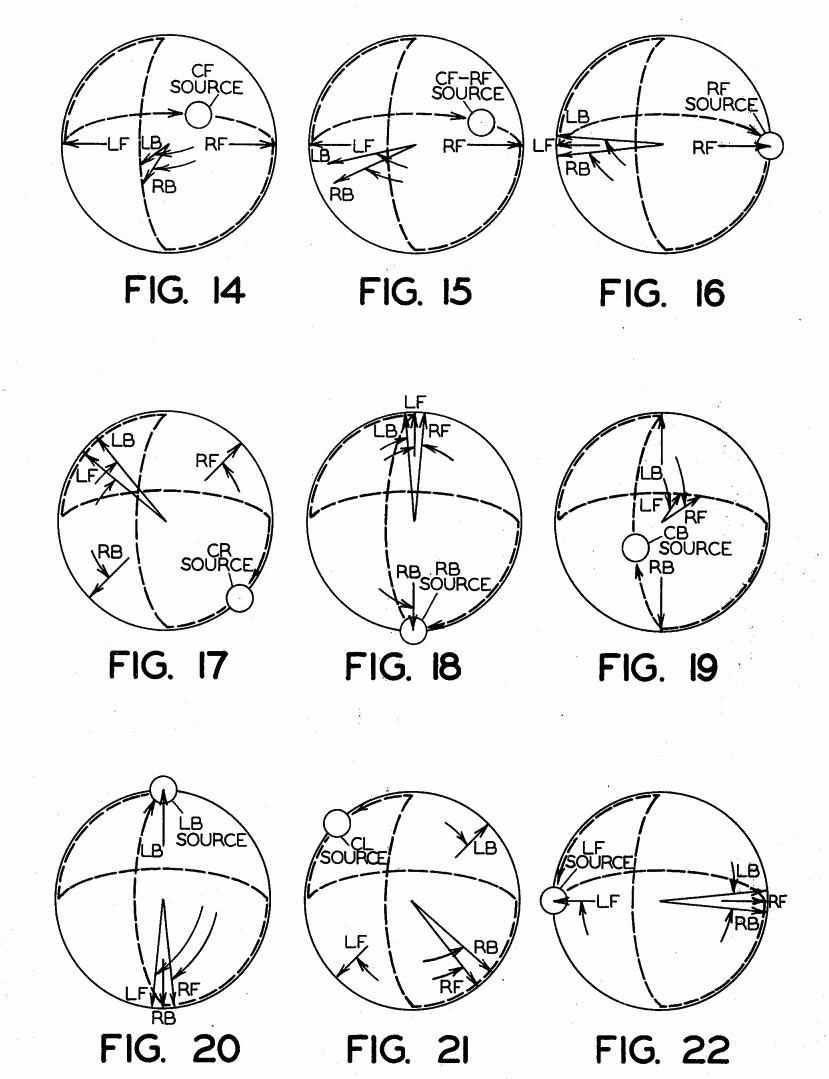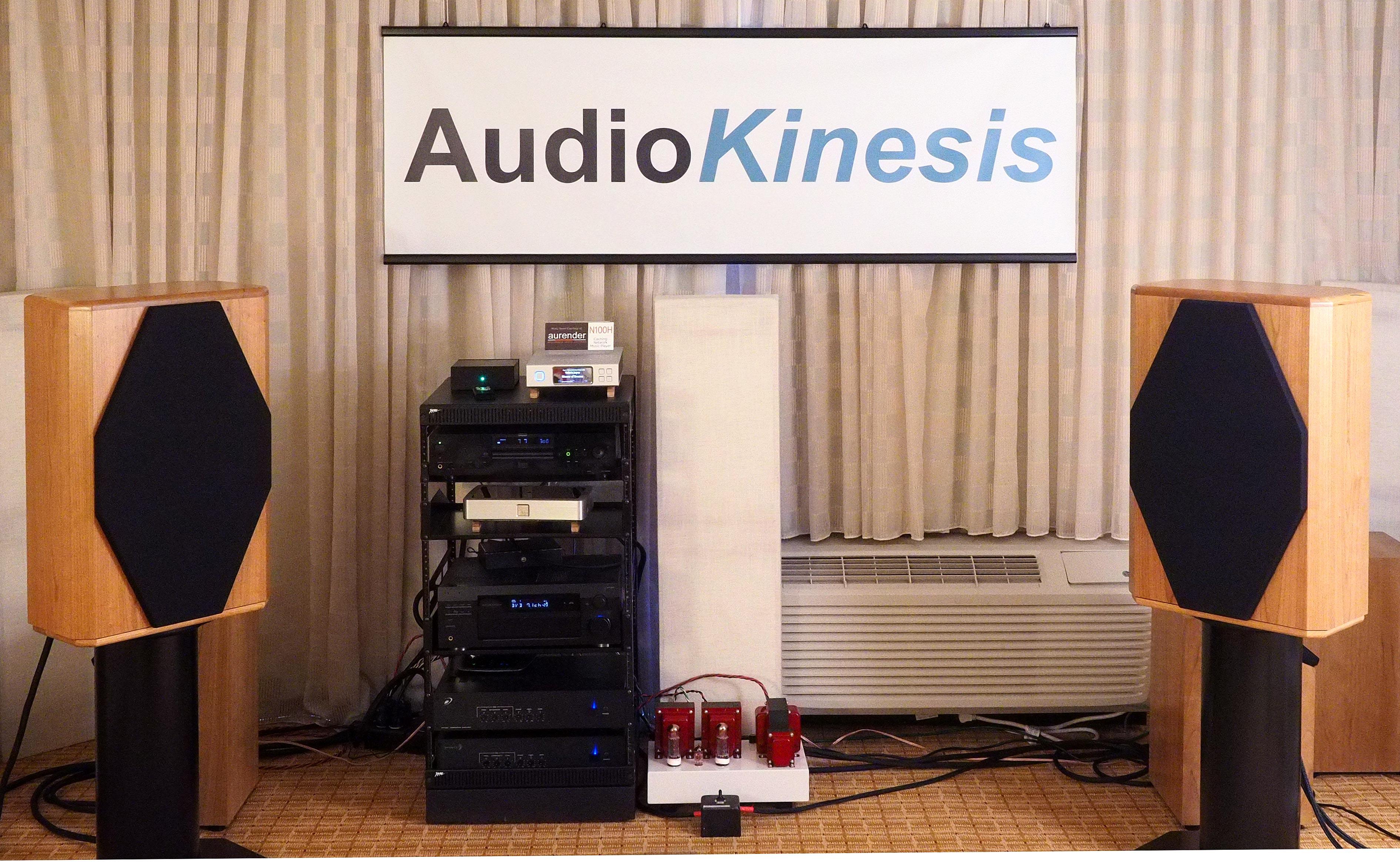
Herb Reichert and Lynn Olson at the Rocky Mountain Audio Fest, 2015 (photograph and image processing by David W. Robinson)
In my sophomore year in college (in Claremont, California), I applied for several Federal summer jobs in Washington, D.C. since my parents lived there (my father was transitioning from the Foreign Service to Marine Midland Bank). I was delighted when my two favorite agencies accepted… the Smithsonian Institute, and NASA Headquarters. It was a tough choice … nah, not really, it was NASA, although I'm still a big fan of the Smithsonian.
When I arrived, I was surprised to find the bigger building of the two Washington NASA offices was for Manned Space Flight, while Headquarters was across the street and only had the top three floors, with Housing and Urban Development in the lower four. My job was in Headquarters, in the top floor, next to the executive suites. The Graphics Department was next to a large, 3-screen presentation room, and we supported another single-screen presentation room on the 4th floor. I qualified for the job because I could do most of the requirements right out of the box… take photographs with a manual camera, develop the negatives, make prints using an enlarger, develop them, run a 16mm sound projector, run an audio console, rewire it if necessary, make tape recordings on a reel-to-reel recorder, and other A/V tasks. It was a 2-person department, and I, a lowly GS-4 was taking over for another full-time employee who was gone for the summer. Basically, a GS-9 level job, but no problem, because I had done a lot of it already.
What was new was the Burke and James 8 x 10 copy camera, a massive view camera on sliders that was used to copy artwork from commercial vendors, internal in-house presentations, and the occasional glossy presentation from the Department of Defense. Oddly enough, I was given no security clearance, even though I was making weekly presentations for the top brass at the agency. I was basically a human version of PowerPoint… I'd take care of the graphics, and run the presentation based on the verbal requests at the meeting. I never saw anyone, because both rooms used rear projection, with big frosted-glass screens and a rear-projection booth painted black. The folks attending the presentation saw a high-contrast image even with the room lights on, while I saw a glowing white screen lit by their room lights. I was warned not to get closer than a foot or so to the screen, because the folks at the presentation would see a ghostly face appearing on the screen, which would cause much laughter and wisecracks on their part. I could hear everything they said because there were four microphones in the ceiling, which was used to make tape recordings that were transcribing and distributed to the appropriate project leaders. Yes, I heard Werner von Braun, who had a remarkably strong German accent after decades in the USA. Maybe he didn't want to speak the Alabama version of English at the Huntsville rocket center (which he headed).
The workflow is interesting in light of how we do things now, in the digital era. In 1969, computers were massive things in large, very cold air-conditioned rooms with a specialized staff that took care of the operating system and task-scheduling, and a bigger staff of dedicated FORTRAN or COBOL programmers who would create custom programs for the business or agency that needed them. The interface for these machines was brutal, punch-card decks (for input) or long paper tapes created by a Teletype ASR-33 (these were modified Telex machines for text transmission). To return to the GS-4 job at NASA HQ, various kinds of graphics arrived in our department… long typed lists of numbers and text, which described progress (or lack of it) for all of the many different NASA programs), beautiful color graphics from military contractors (this was aimed at generals and congressmen, so it had to look really good), and detailed engineering drawings of various projects and proposals. All of it went in front of the Burke & James copy camera; my job was to translate the originals into printed sheets for presentation handouts, make sharp 8 x 10 transparencies for projection, do the presentation without screwing up the order of the slides, tape what people said, and turn all of it over to another department after the presentation was over. I never saw anyone, just heard their voices as the 7" tape reels captured what they said.
The B & J (bunk-and-junk as nicknamed by the staff) was a beast, like all view cameras. Put the first original Artwork on the horizontal copy table, rotate up 90 degrees, and snap in place. Take a stack of film holders, which have two sides which you MUST keep straight or get a double exposure or no exposure at all, go into the darkroom to load a stack of film holders with Kodalith high-contrast sheet film, and take the loaded stack out to the waiting B & J. Hit the lights and focus the inverted image on the ground glass, set the aperture, set the shutter speed, cock the shutter, slide in the first film holder from the stack, noting the groove for Side One, pull the dark slide out, take the picture, replace the dark slide, pull the film holder out, kill the lights, rotate the copy table so it's horizontal again, take out Artwork 1, replace with Artwork 2, rotate the copy table up again, hit the lights, re-focus if necessary (full aperture), re-set the aperture and shutter speed, cock the shutter, flip the film holder around for Side 2, feeling the groove to make sure it's really Side 2, pull out the dark slide, take the picture, replace the dark slide, take out the film holder (which has 2 pictures on it) and put it on Stack Two (never confuse the input and output stacks), cut the lights, rotate the copy horizontal again, and take Artwork Two and put it on the stack of already-photographed materials.
If you're starting the day, this is a good time to go into the nearby darkroom (nicknamed "the rack" because of the foul smells and not-so-clean condition) and check your work. Pull the first negative out of the film holder, develop to the timer, then stop bath, fixer, wash, and after a quick dry, put it in the enlarger and see if you goofed up. If high-contrast film is underexposed, fine lines in drawings disappear, which is disastrous for detailed engineering drawing (we're talking NASA here… the complexity of these drawings was unbelievable). If the film is overexposed, then parts of the text block up and become unreadable. If the camera is just a bit out of focus, you can get both conditions at once, so precise focus is essential. If the resulting enlarged or contact print looks below par… and you know your audience is a bunch of freaking NASA engineers, who are the most picky and cantankerous guys in the world, so it better look good… so it better be razor-sharp and clear. If not up to spec, back to the camera again, more careful this time, and you don't want to waste materials. They do keep track of inventory, this is a government job and that's what they do.
Congratulations! You've now taken two pictures out of a stack of 30 or 40 originals. You're going to convert your eventual stack of 8 x 10 negatives into a matching set of (positive) transparencies and a full set of Xeroxed hand-outs for tomorrow's presentation, which you are going to give, hidden behind the rear-projection screen. If there are grey-scale or color photographs in the collection of original artwork, you're going to be using Kodalith with a built-in screen, and you have to be spot-on with both focus and exposure (so the screen pattern is retained in the copies). This is Monday, and there several presentations scheduled this week. The presentations for the top brass are fancier, with beautiful graphics from big companies like Boeing and Martin-Marietta, and the occasional 16mm sound fill, with a dual-projector setup so there's no wait during the changeover between reels. The presentations for the project managers are duller, pages and pages of figures, and many call-outs from the managers saying "let's go back to figure 22-B, line 5." I tape it all, sitting behind the glowing screen.
The meetings were fun to listen to, though. I heard the engineering team leader grumbling about General Electric doing its old trick of shining it on for their progress reports, with no problems at all reported (this is where I learned that EVERY project pushing the state of the art ALWAYS has many problems). The crusty old NASA guys remarked that maybe GE could get away with bullshitting the Pentagon, but NASA would look like complete idiots if the damn Moon Rover got stuck and the astronauts had to hoof it back to the LEM on their own. Which is exactly why NASA specified one motor per wheel… the poor Rover could limp back to the LEM on only one motor, if it had to. Sure enough, a few years later, one of the General Electric motors DID conk out on the Moon expedition, and the astronauts did NOT have to hike back to the LEM, thanks to redundancy. Because the Moon is a long way from home, and you really don't want the astronauts to find out the limits of the PLSS life-support systems on their backs.
Some people may have the impression that NASA in the late Sixties was like a stage set for Star Trek or 2001. Uh, not really. All the state-of-the-art stuff was in the hardware that was flying, and Mission Control in Houston. At Headquarters, we worked at Eisenhower-era gray steel desks, much of the equipment was old, and a fair amount was military-surplus, like the Navy-issue Bell & Howell 16mm projectors that had been converted to sealed arc lamps. The only really new thing I saw was a big Xerox copier in very heavy use; the rest was all Fifties-vintage. Despite the immense scale of Apollo, we didn't have the money to splash around that the Pentagon took for granted.
Weirdly enough, Woodstock was around the same weekend as Apollo 11. I was invited to go up there… several of the younger staff gave me an invite, but I turned it down. I had already been to one Grateful Dead concert (at UCLA), and didn't like the near-panic crowding and frankly pretty poor playing on the stage. Plus, my idea of a good time does NOT include sleeping bags, tents, Porta-Potties, and mosquitoes. No thanks. I'm a city boy that likes high-tech and modern plumbing, not low-tech and mud. Plus, even though the closest I got to the Moon landing was listening to the live feed from Houston on the little Bell System monitor speakers scattered through the offices, that was good enough for me. NASA HQ was where I wanted to be, a tiny part of an immense drama that had never happened before in all of human history.
I was kind of surprised to see the Live TV feed from the Moon. Even though I worked at HQ, I wasn't at Manned Space Flight next door, and didn't know the exact details of the Apollo 11 mission. Unlike the Pentagon, which has always rolled in more money than they know what to do with, NASA staff was always afraid of Congress cancelling programs if things didn't go 100% perfect… or for that matter, cancelling programs if the public got bored. I did see the plans for the Space Shuttle, which was originally called the Space Truck (really), and it was a much smaller, simpler system and intended as part of an overall Space Transportation System of a low-earth-orbit shuttle, a Space Tug between the Moon and Earth, and a space station orbiting the Earth and a small Moon colony of about 10 to 50 people, similar to McMurdo Base in Antarctica. Nixon cancelled everything but the Shuttle, and left the last two Saturn V's on the ground, where they remain today as museum exhibits.
I have mixed feelings about the 50th Anniversary of the Apollo 11. The Space Transportation System, with a permanently occupied Moon colony, and the planned Mars landing in the early Nineties, never happened, thanks to Nixon's unremitting hostility (NASA was seen in Washington as the legacy agency of JFK and LBJ) and public apathy. We do have a lot of spin-off technology, including digital sound (which was originally a modification of missile telemetry digital recording systems), and without question, extraordinary social gains compared to the 1960s. Comedians like Bill Maher like to mock the Baby Boomers, but we're the generation that did the heavy lifting for Civil Rights, Voting Rights, women's rights, gay rights, an end to barbaric practices like lobotomies and forced institutionalization, and last but not least, marijuana legalization. In the long run, the hippies were proved right, and they've basically won on all the social issues. We may not be living on the movie set of 2001, but it's whole different world socially, and frankly, much much better.
What's missing is the intense optimism of the 1960s. That was something the Mad Men TV show got 100% wrong. The TV show was about a self-obsessed group of insular New Yorkers who thought the universe revolved around them, and were barely conscious of anything outside their tiny little circle. It did NOT capture the we-can-do-anything mood of the United States in the 1960s. I was there, unlike the show producers, and I remember it very well. After Nixon, something in this country broke, and neither Reagan, nor Clinton, nor Obama brought it back. What we lost was a sense of the future pulling us forward.
The dangerous aspect of the expansive 1960s optimism was the Vietnam War, simply because the leadership in DC truly thought they were invincible, and Vietnam was something the USA could almost do in its sleep (and pretty much did). The most lasting and positive aspect of the optimism were not only the extraordinary accomplishments not only of the Mercury, Gemini, and Apollo programs, but also the completion of the Interstate Highway System that replaced the rickety and worn-out roads of the 1950s, the conversion from dangerous and noisy piston airliners to quiet and much safer jet travel, the replacement of low-quality B&W TV with pretty-good color TV (and the first country in the world to do so), and the transition to stereophonic sound for LP and FM broadcasting. Not bad for a single decade-and-a-half. The music was pretty good too.
And… the social changes would have been unimaginable to any but the wildest-eyed hippies of the era. Yes, we still have dirty old capitalism, but the foulest forms of Communism are gone and are not coming back, the Cold War in is the history books, and like it or not, the Internet is changing human consciousness in a way similar to the advent of Gutenberg's printing press in 1439. It took a couple of centuries for the social turmoil to settle down from that, and we are probably looking at similar changes in human consciousness. Not bad for 50 years.




